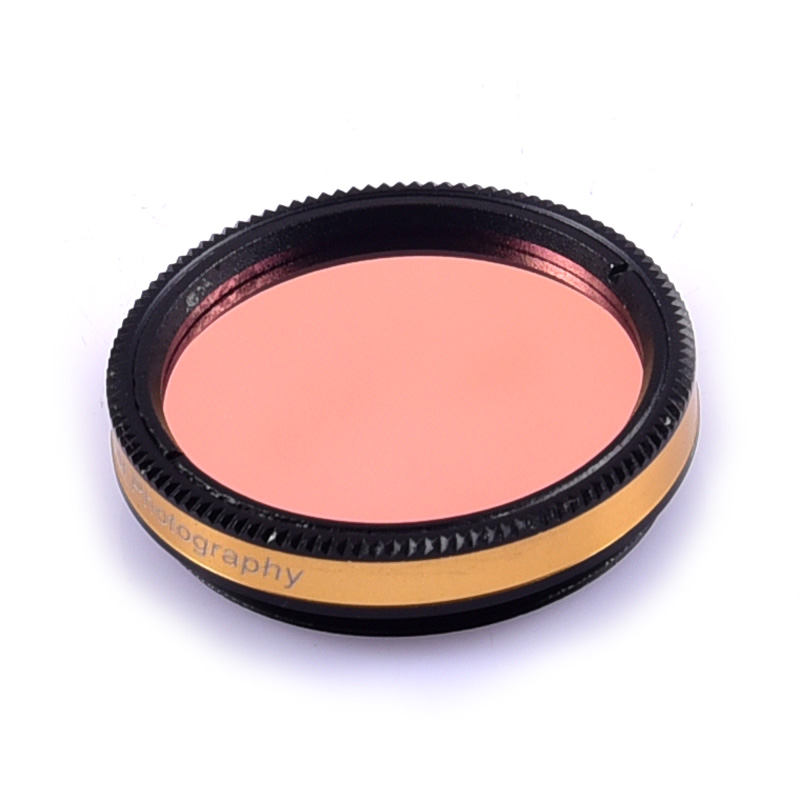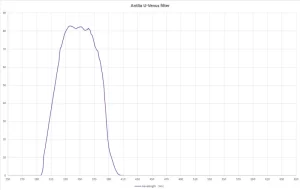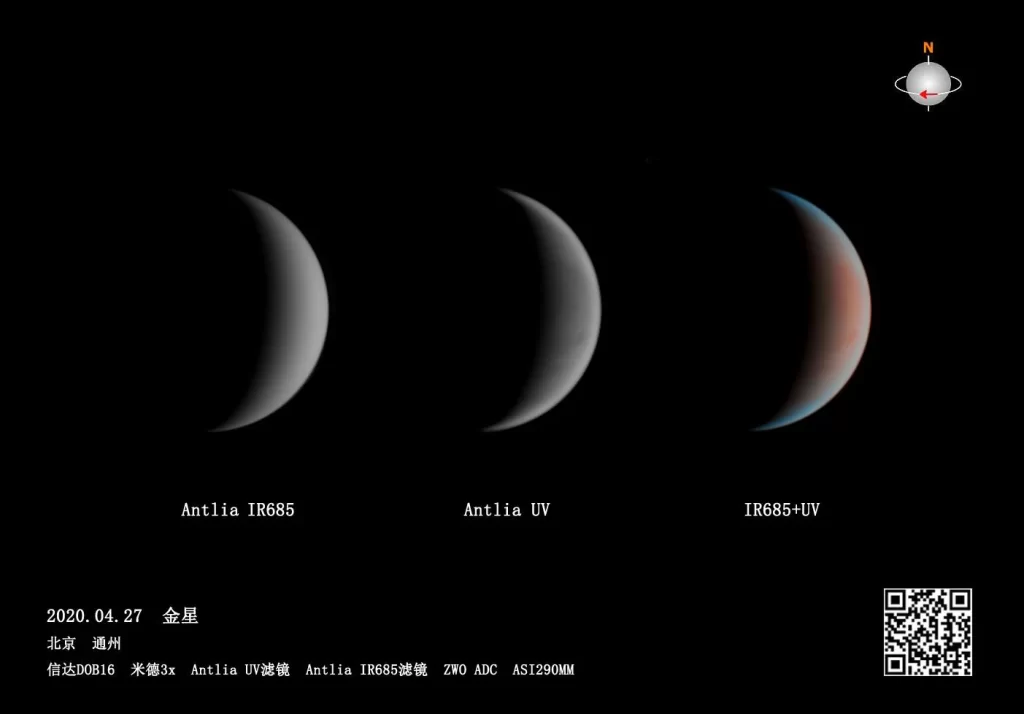The Antlia Venus-U filter is built for imaging the cloud structures of Venus and Jupiter using CCD cameras on a telescope. These cloud details primarily reflect ultraviolet (UV) light, which standard broadband filters cannot capture. Antlia uses advanced dielectric interference coatings on this filter to deliver high transmission efficiency and precise isolation of critical UV wavelengths. It blocks unwanted frequencies beyond 400nm, which normally overpower UV cloud details on camera sensors. Like Antlia’s premium LRGB filters, the Venus-U filter reduces halos around bright stars and boosts contrast.
Recommendations for Using This Filter:
-
Remove protective windows: When using the Venus-U filter with a planetary colour camera, remove any protective UV-IR window. Leaving it in place may reduce transmission of the crucial UV wavelengths that reveal cloud details.
-
Expect longer exposures in UV: The lower the frequency in the UV band, the longer your exposure time will need to be. Most sensors lose sensitivity rapidly at shorter UV wavelengths, requiring extra exposure to gather enough signal.
-
Modify DSLRs for UV photography: For ultraviolet photography with a DSLR (such as shooting UV flower patterns), you’ll need to modify the camera by removing its internal infrared cut filter.
-
Account for UV light limitations in non-astro use: In non-astronomical settings, UV lighting conditions may limit performance. For example, electronic flashes emit less UV at shorter wavelengths, and the flash tube glass absorbs more UV, requiring longer exposures, higher UV intensity, or increased ISO sensitivity for continuous UV light sources.
Non-Astronomical Applications:
General UV photography, including flowers, plant health, insects, forensic analysis, and medical imaging.
Filter Ring:
1.25”( 28.5*0.6 )
Ultra-thin filter cell to minimize vignetting by maximize possible clear aperture
Black Anodized Finish
Laser Engraving No Fading




Reviews
There are no reviews yet.